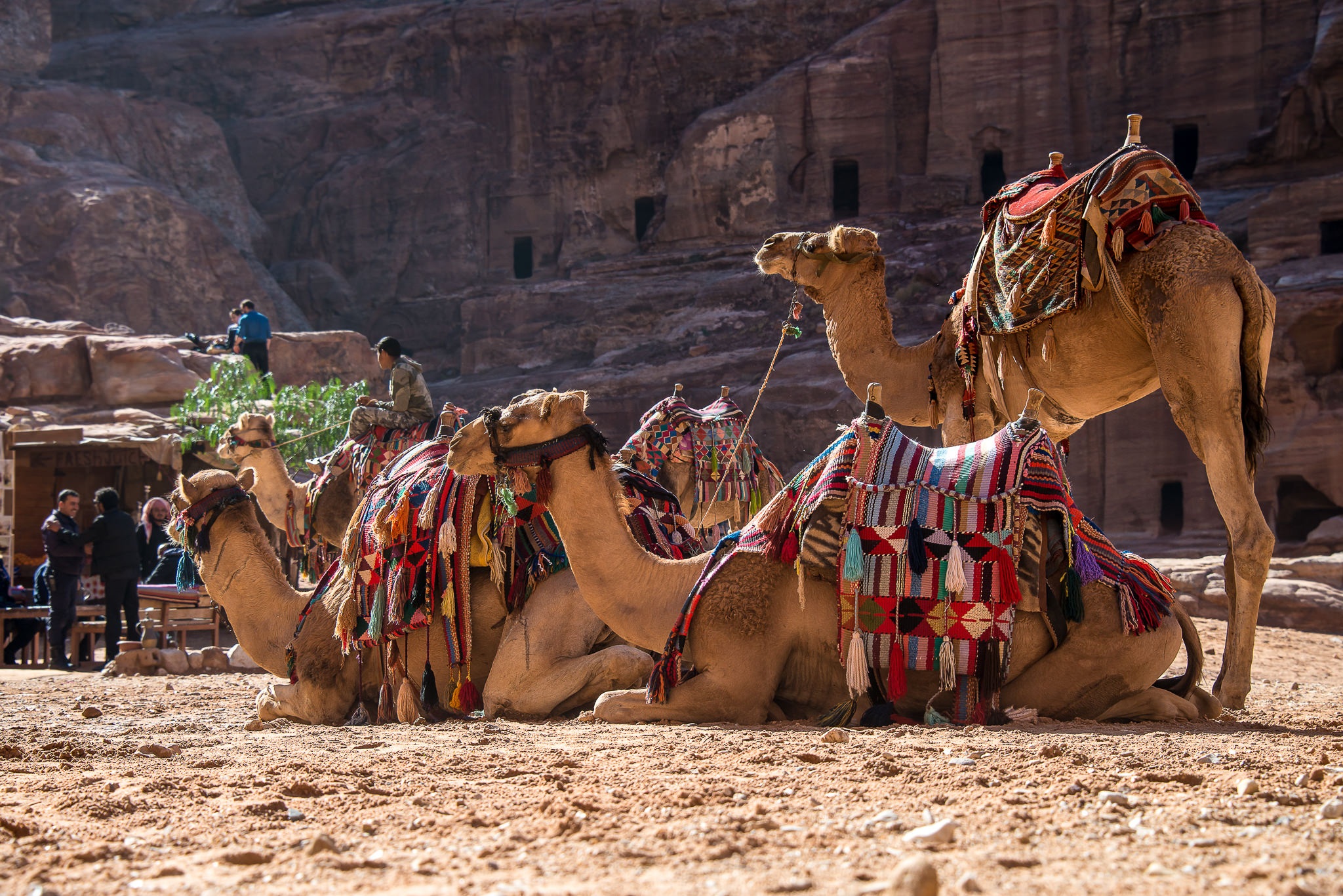One of the top places on my “bucket list” has been the ancient hidden city of Petra located in southern Jordan about 90 miles north of Aqaba. The most famous image of Petra is the Treasury (El-Khazneh) that suddenly greets each visitor as he enters this hidden city.

Carved into the sandstone rock it is impossible to adequately describe, it must be experienced. Almost 100 feet wide and 150 feet high, it dominates the entrance to the city after exiting the long narrow Sig (chasm) one must travel to enter Petra. It was carved in the first century BC as a tomb of an important Nabataean king and later used as a temple.
The Nabataeans were an ancient caravaning Arabian tribe who settled in southern Jordan more than 2200 years ago. Their trading business enabled them to establish a powerful kingdom that stretched from Damascus and included parts of the Sinai and Negev deserts effectively ruling the greater part of Arabia.
Their trading culture opened them to the influences of the Greeks and the Romans and those influences are evident in the over 800 monuments and structures that make up Petra. Petra is breathtaking and flourished for over 400 years around the time of Rome and Christ until it was occupied by the Roman legions of the Emperor Trajan in 106 AD when it began its decline. Gradually, because it was located in a very difficult to reach hidden canyon surrounded by huge rocks, knowledge of its location disappeared by the Middle Ages and it was not rediscovered until 1812 by a Swiss traveler named Johann Ludwing Burckhardt.
During its height Petra was the focal point in the trading routes connecting the East and the West. The Nabataeans were consummate traders and extraordinary builders. As you explore Petra you walk for kilometer after kilometer thorough the buildings, tombs, baths, funerary halls, temples, arched gateways, and colonnaded streets carved by the technical and artistic genius of its inhabitants.
To enter the Sig (chasm) leading to the ancient city of Petra, you travel to the modern city of Petra from either the port city of Aqaba (2 hours to south) or from Armen (4 hours to the north). I highly recommend staying more than a day so you can soak in the experience of Petra (there are many quality hotels in the city). This way you can experience the ancient city of Petra both at night and by day.
I warn you that you will be walking almost two miles into and out of ancient Petra on rock and sand each time you visit. The walk in is downhill and the walk out uphill. You can rent a horse, ride a camel, or travel in a horse and carriage if the walk is tiring for you. The price for these is controlled by the government and is reasonable ($30 for a horse and carriage for two people).
Entering Petra at night is a very powerful experience. Because there is no electricity on the 2 mile path into the ancient city and no electricity in the ancient city, the Bedouins at night put candle lite luminaries on the path in and then light the Treasury area with luminaries. Each night they share Bedouin music and stories for an hour in front of the Treasury. I highly recommend you not miss this experience even though you must walk in and out without assistance (make sure to bring a flashlight or headlamp because the pathway is rugged).

When you have visited almost 100 countries and flown over 7 million miles, you have plenty of stories and a lots of experiences to share. Bruce Fredrickson, founder of Curiouscruiser.com, loves to share, write and take photos. While he lives in Boulder, Colorado he has never lost his curiosity and his love of sharing with and teaching others, so his travels go on.








